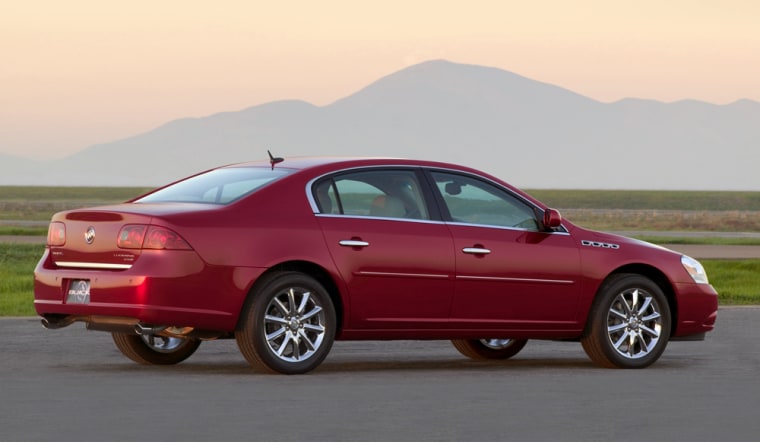Ballet dancers and professional jockeys are not the only ones who worry about weight. U.S. carmakers worry about it too, and with good reason: Even as the price of gasoline has crept higher in recent years, their cars are piling on the pounds.
The average weight of a U.S.-made vehicle has increased by 500 pounds over the last 10 years to 4,142 pounds, according to recent data from the Environmental Protection Agency. The average weight of current vehicles is now the heaviest since the EPA began measuring weight in 1975.
“This is a huge issue,” Kevin Reale, an automotive analyst at Boston-based AMR Research. “One of the biggest things driving this weight increase is everyone wanting bigger engines and more horsepower. And then on top of that we are seeing people want all of the new components like DVD players and other entertainment devices in their vehicles. All these things are starting to add up.”
News of the increased weight comes at the worst possible time for drivers. Increasing the weight and horsepower of a vehicle decreases its fuel efficiency, and with the price of gasoline soaring to a record high above $3 a gallon this summer, the cost of fatter cars is likely to weigh heavily on motorists’ pocketbooks.
Carmakers are constantly working on ways to reduce weight, notes Reale. At Chrysler, for example, engineers look for parts they can make out of lighter-weight aluminum instead of steel, said Reale, although they then have to do a cost-benefit exercise to ensure changes are not too expensive and do not compromise safety.
“This is the constant tradeoff in [the] vehicle development process,” Reale said. “You have to balance cost, weight, the government’s fuel-efficiency standards and crash test results. After all, anyone can build an all-aluminum vehicle which will weigh next to nothing when compared with its steel counterpart, but you would jeopardize safety standards and likely push up the cost of the vehicle. So this is a balancing process.”
Increasingly, automakers are asking their suppliers to reduce the weight of parts. Magna International, for example, used alternative materials for moldings on the Lucerne for a net weight loss of 5 percent, according to trade publication Automotive News.
While automakers have worked to develop fuel-saving technologies, improved aerodynamics and more lightweight materials, the changes have not been enough to offset the weight gain notes Paul Newton, an automotive analyst at consultancy Global Insight.
“Size and weight are two factors often mistakenly believed to increase safety by the consumer, adding to the difficulties automakers have in overcoming inertia in the market place and developing lighter vehicles,” Newton wrote in a research note, adding that part of the vehicle weight increase is due to America’s love affair with bulky sports-utility vehicles.
But the much-maligned SUV is not entirely to blame for the increase in vehicle weight. Newton notes that the size of all vehicles in the various model groups has grown over the past decade. The Honda Civic subcompact, for example, has grown from 3.7 meters in 1975 to 4.2 meters in 2005 and has more than doubled in weight from 1,494 pounds to 2,976 pounds.
Given the likelihood of higher energy prices in coming years, Reale thinks automakers should be looking further down the road when it comes to improving the fuel-efficiency of their vehicles. With terrorism, unrest in the Middle East and pipeline problems in Alaska driving up the cost of gasoline, the cost of operating a car isn’t likely to decline in the near future, he notes.
“The days of designing vehicles for today have gone,” said Reale. “I think the challenge a lot of automakers have today is designing vehicles for when gasoline is at $4.50 a gallon — they need to think about fuel costs a few years out.”
Consumers are going to demand these changes, Reale added. Smaller cars — like the Honda Fit, the Toyota Yaris, the Kia Rio, the Chevy Aveo and the Mini — have outsold trucks in recent months, he said.
“The reason people are moving into small cars is high gas prices, and as prices go higher sales in this segment can only grow,” Reale said.
